Graphic test of the house, what it is and how it is interpreted
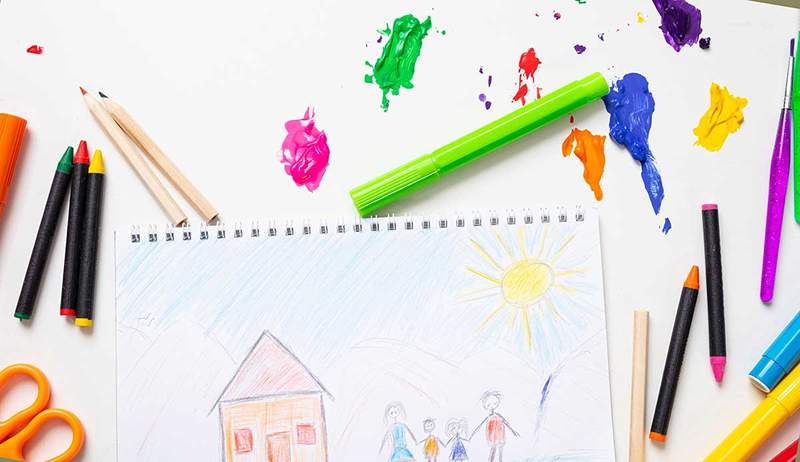
- 2035
- 507
- Gregory King
The graphic test of the house is a tool widely used in psychology to evaluate emotional, cognitive and personality aspects in children and adults. Through the drawing of a house, the professional can analyze certain aspects of the individual, such as self -concept, interpersonal relationships and emotional state.
Content
Toggle- The house test, a very useful tool to value children
- Test administration
- Payouts to pass the test
- House test considerations
- The graphic plane
- The formal plane
- Other considerations
- Elements of drawing and how to interpret them
- Location on the page
- Size
- House types
- Ceiling
- Fireplace
- The walls
- The door
- The Windows
- Soil
- The fence
- The way
- Accessories
- Bibliographic references
The house test, a very useful tool to value children
The drawing of a house is a common element in the drawings of the little ones, both girls and boys. This can be related to the representation of the need and the desire to feel safe at home, protected from the dangers of the outside world. Through the drawing, children express their lives, their emotional relationships with the family and their connection with the environment.
In children from four to five years, the drawing of the house can be simple and schematic, offering limited information due to the lack of elements to analyze. However, sometimes significant features can be found even in these drawings.
The house test can provide valuable information about the child's temperament, its emotional world and how it relates to the external environment.
From the age of 6, houses of houses usually include more details and variations. They can be large or small, more or less elaborate, and present additional elements such as trees, plants, animals, clouds, fireplaces or smoke. It is at this point when a deeper analysis can be performed.
The house test, like other projective tests, is usually well accepted by children, since they consider it little invasive and easy to make. Some children may show resistance, arguing that they don't know how to draw well. In these cases, it is important to reassure them and explain that the quality of the drawing will not be evaluated and that they can do it as they want.
Test administration
The graphic test of the house is done easily, asking the person to draw a house on a blank sheet of paper. Specific instructions on the appearance of the house are not provided, allowing the individual to express themselves freely In your drawing. It is essential that the evaluator offer a relaxed and pleasant environment for the person to concentrate on the activity. There is no time limit, and the drawing will be considered finished when the person decides.

Payouts to pass the test
We know that drawing is not easy or simple for some adults. It is much easier and more spontaneous with a child to do this; Recall that many adults feel inhibited when having to draw and will wield a varied series of arguments such as: "I have not drawn a long time", "I never studied drawing", "I draw very badly", "you are going to laugh when You see my drawing ”etc ... and thus show some resistance to the action of drawing. These are expressions that hide the insecurity of the subject.
In the case of a safe subject of himself, he will not repair so on how the drawing will come out, the much will take the action with a certain humor but the slogan will definitely follow and draw.
Must create, that the subject feels sufficient freedom and ease to design as he can and remember that it is not the perfection or artistic of the drawing that is studied here but its psychological implications. The slogan will be very simple: Please draw a house, and you don't have to worry about how artistic it results.
The smooth blade will be given in a “apaisada” position, this is the way you must use it.
Once the drawing has begun, we must take into account everything that the subject manifests, what he does, if he deletes, retouches, if he asks for another sheet because he states that he has done it wrong, if the position of the sheet changes putting it vertically and not applied. You may ask what kind of house should do, if you can or should adorn it or not, if you can paint it, etc ..
We must know that Every question contains a problem; There is a fight inside the subject, he must decide, he wants to do well, he does not want. All these data will provide more information when analyzing the drawing.

It will also be good (and useful) that at the end of the test, the professional who manages the test asks you certain questions, such as:
- Is this inhabited or uninhabited house?
- Who live in it?
- Do you know its inhabitants?
- What relationship do you have with them?
- Who is the owner of the house?
In the event that I mention that the house is uninhabited we can ask:
- Why nobody lives in it?
- Does that house owner?
- Does the owner think about it ever?
- Is the dirty or clean house?
Anyway, these are some suggestions; You could surely think of some more questions. But remember that the questions should not induce a response of "yes" or "no", we look for questions in which the answer must be thought, prepared by the subject.
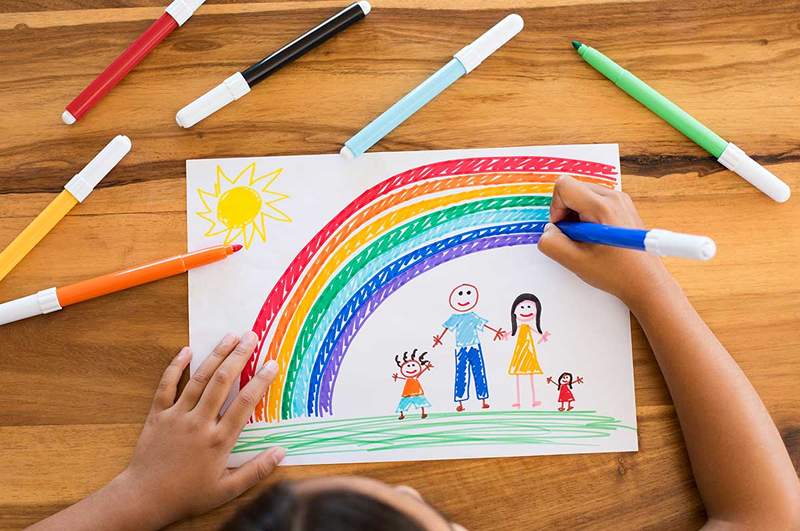 Purpose and interpretation of the drawing of the human figure
Purpose and interpretation of the drawing of the human figure House test considerations
The House will symbolize home life and interfamily relationships, personal situations with members of that family, mother-child relationship, feelings of attachment, abandonment, loneliness, affection, etc .. .
We must bear in mind that to start the study of the house test in its psychological aspect, it must be said that every drawing must be analyzed from two planes:
- Graphic plane
- Formal plane
The graphic plane
It consists of common aspects that have all the drawings. (Stroke size, direction, pressure, continuity, situation on the sheet, personal style).
It is important to take into account these aspects of the graphic plane when interpreting and analyzing the drawings, since the Graphic plane represents the "way of doing" as Personality projection, beyond the drawing that the person performs.
The formal plane
Study the constituent variations of its parts. (Type of roof or roof, doors, windows, tiles, fireplace, walls, etc.)
He Formal plane It refers to the "concrete drawing", in this case of "the house".
Other considerations
Other things to keep in mind is that Interpretation of a house drawing should be based on approaches, that is, in the association between certain characteristics of the drawing and a high probability of presenting a specific temperament or personality feature. However, it is not an exact science, so It must be cautious When interpreting these tests. Despite this, we must not forget the great use of these evidence as a means of communication and connection with the individual's inner world.
The results must be analyzed as a whole, not only from individual elements.
It is essential to analyze the results in an integral way, instead of focusing only on isolated elements. We must remember that People experience constant changes and evolution, which makes it difficult to determine their thoughts and behaviors. Some aspects of the drawing could be a consequence of recent and temporary experiences instead of reflecting permanent personality characteristics. For example, if someone draws a house next to a lake, it could be because he recently enjoyed a boat ride or a quiet afternoon near a body of water. In this case, the drawing would mainly reflect the recent experience, but it could also suggest an inclination towards the appreciation of nature, the desire to find peace and serenity, or the interest in escaping the bustle of everyday life.
Inferences about the characteristics of a person from the analysis of this type of test are only reliable if combined with other evaluation methods or observations. This we allows to formulate assumptions that must be subsequently verified with other approaches. The uniqueness of each person and situation makes it difficult to assign a uniform meaning to drawings that look like similar. Therefore, it is necessary that these tests be used together with more objective ones.
It is important to consider the age of the individual when analyzing the drawing, since a particular characteristic can have different interpretations according to the age of the person.
Graphic test of the human figure's drawing (DFH), what is and how it is interpreted
Elements of drawing and how to interpret them
Recall that when drawing a house we are, unconsciously, expressing the concept we have of ourselves in certain and certain aspects of our life.
Once the drawing has been carried out, the professional evaluates different aspects of the house, taking into account the following characteristics:
Location on the page
The position of the drawing on the sheet can reveal emotional aspects and has a highly important symbolic load. We can take that drawn sheet and fold it in 4 equal parts. Taking as a parameter the central point of the folds we can identify to which area the drawing is displaced.
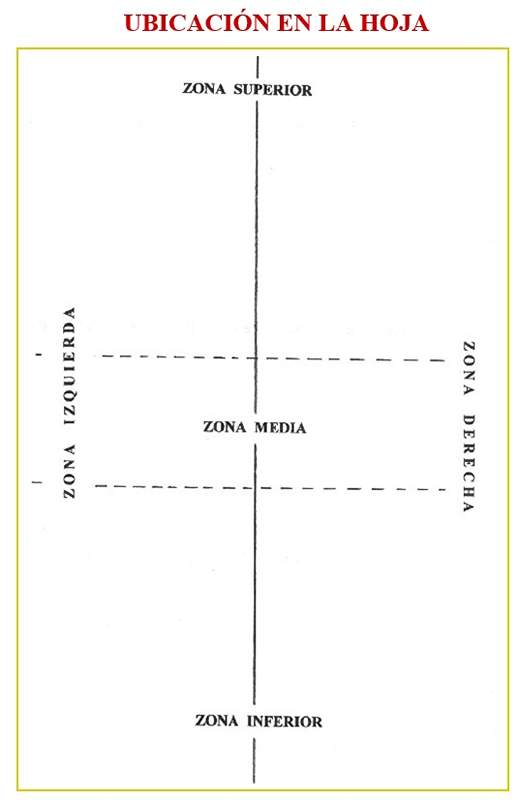
- Upper area: It is the expansion zone of sublimated or spiritual needs and aspirations. Indicates superiority ambitions.
- Lower zone: Symbolizes physical and material trends and needs. Organic needs (sexuality, nutrition, etc). Motor -type needs (physical movement, work, sports, environment change, etc). Technical and practical interests (domain of physical senses). This vector also covers aspects such as: attachment to the native country, family, their own children, customs and language.
- Middle area: Indicates the trends, aspirations and needs of the soul. Is the sensitive life of being. Desires for justice. Balance. Objectivity. It is the plane of love, the justice of the heart. Good balance between introversion and extroversion. Balance also between optimism and pessimism.
- Right area: It is the need for contact. The paternal image. Inflation of the self. Paternal world. Adult attitude. Male, active and aggressive attitude. Attitude of progress towards the individual, family or collective future. Extraversion. Action or march towards the desired objects. Projection. Confidence in the future.
- Left zone: Impulses or desires influenced by maternal image. REFLECTION, ANALYSIS, CHILD AND PASSIVE ATTITUDE. Regression to the individual, family or collective past. Introversion. Contemplation. Egocentrism. Introjection. Narcissism.
Size
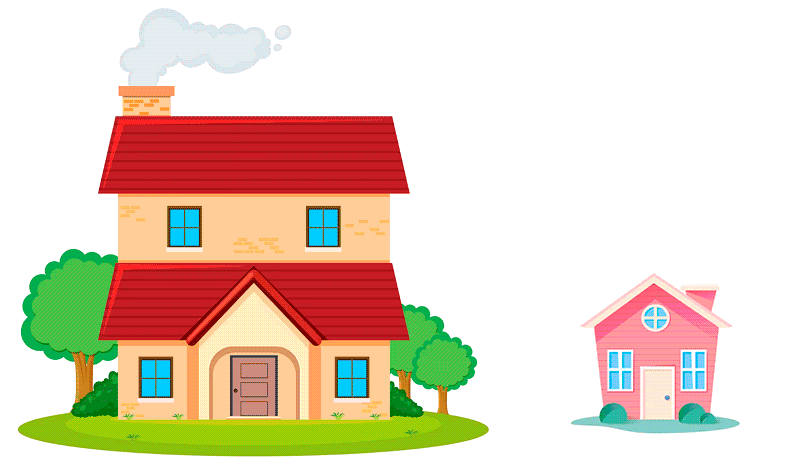
- Normal size: When the drawing has a normal size, occupying approximately half of the paper provided and leaving blank spaces around, this suggests various positive characteristics in the person. These include an appropriate integration to the environment, balanced and harmonious adaptation, an optimal balance between introversion and extroversion, healthy emotional stability, positive self -esteem, adequate control of itself and a good perception of space and time.
- Big house: Generally, it is related to happiness and well -being. The child who draws a big house is usually outgoing, affectionate and friendly. Your home is cozy and is always open for your friends. It also indicates that the child perceives his house as comfortable and warm. However, this must be verified considering the disposition and form of the other elements of the drawing.
- Very big house: When the drawing is so great that it does not fit in a single sheet, the individual will need to join several sheets to complete his creation in the desired size. It is important to ensure that the drawing is not unfinished due to lack of space, providing enough paper so that the person can finish their design. In this way, we can evaluate all the details of the complete work. A drawing of these characteristics could indicate features such as megalomania, dissatisfaction with the environment, feelings of superiority and lack of attention to the smallest details. It is essential not to evaluate an incomplete design, since the absence of elements in the drawing would prevent reaching precise conclusions.
- Small house: This type of drawing may reflect the need for retracting, introversion and self -protection against the outside world. Depending on the child's age, it can show shyness, difficulties in relationships with their peers, fears and/or feelings of inferiority. All this will be confirmed by relative size and the presence and shape of the other elements.
- Very small house: The drawings that occupy only between 10% and 12% of the sheet can be extremely small, but that does not necessarily mean that they are incomplete. These drawings can point out a perception of the world and the distorted environment compared to reality, that is, the individual sees their environment disproportionately. They could also indicate physical or mental fatigue, lack of energy, difficulty deepening things due to excessive approach to forms, it can also be selfishness and meticulous attention to details and precision.
- High house: If the house drawn is excessively high, it could be a sign of the need to grow, mature and achieve adult life. This type of drawing is common in children with affective problems at home who wish to grow to emancipate.
- Low house: Low houses, with a short distance between the ground and the roof compared to their width, are associated with feelings of oppression, anguish, concern and discomfort in the current home. This is especially true if the soil line is not included or if they appear deformed or unfinished.
- Two-floor house: If drawing before 9 or 10 years, it can be related to a good cognitive level. The child could be sensitive, observer, retailer and have good family and social relationships.
House types

- Simple Family House: In this case we will understand that it is a family home, with some departure from neighbors, especially those that are truly upset. The subject tries to build a safe shelter for his family. Try to live quietly with their loved ones and away from what is noise and pollution. This would be a fairly positive house although obviously that will depend on the sum of the other features that compose the design.
- Cottage: Normally it is associated with the desire to seek tranquility, a peaceful life and escape the noise and rush of the urban world. You can also indicate sensitivity, appreciation for the arts and the need to get away from the material.
- Far house: If it is represented small and surrounded by a detailed landscape, it can express sadness, nostalgia or "emotional distancing" with respect to the family. Can symbolize hopelessness due to a recent change or the loss of a loved one. You can also denote special sensitivity and the need to escape daily routine.
- House with garden: In general, it is a positive sign if the garden is proportional to the size of the house. It can symbolize the taste for open spaces, outdoor activities, nature and animals. It is characteristic of outgoing people (if there are no gates or walls), with sensitivity and openness towards others.
- Block of flats: In this case we are facing an anguishing terrain. Recall that usually the buildings of departments houses (or hives as others name it) are in the middle of the city, supporting the noise of bus traffic, cars, pollution, some lack of privacy and their own space, environment agitated, etc ... typical of a city. Well, taking into account these elements mentioned here we will then recognize in the subject who draws a distressed, pressured person, fighting with his environment, trying to survive in "The Cement Jungle". This subject feels pressured by the demands of the environment (understand half for: home, interpersonal relationships, work, projects) the subject lives serious difficulties in developing fully, to find his own path, his own inner self. This leads us to discover a subject with great struggles and problems with himself and with his environment.
- Castle or house with appearance of Castillo: The interpretation can vary according to age and characteristics, especially if we talk about children. On the one hand, it could be someone with great imagination, who enjoys dreaming and creating places and characters. On the other hand, it can show a strong and desire to power. The interpretation will depend on the disposition of the other elements. In older people, it can symbolize protection and escape from reality, and the need to defend against external elements perceived as dangerous or undesirable.
- House -shaped house: This type of design is generally done by professionals in the construction branch such as a mason, an architect, a waller, etc, and generally this design is the answer that its author offers in times of concern, try to solve problems through the use of useful spaces.
Ceiling
The roof or roof of a house is often related to the top of a person, that is, your mind or spirit. This includes high level concerns such as creativity, imagination, consciousness, morality, social, ethical or even religious aspects. It is important to remember that the ceiling symbolizes the space of vital growth for the imaginative life and the thought of the individual.
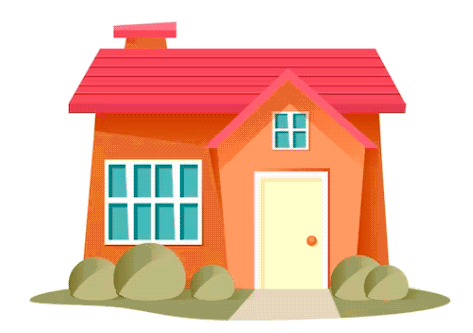
- Simple two -slope roof: It is the most common and is related to a realistic profile and well connected to the world of ideas, as long as it does not present deformities or anomalous elements.
- Exaggeratedly large roof: It is characterized by having a roof that stands out from the side walls of the house, which makes the rest of the house look smaller. This type of design may indicate that the subject has a tendency to seek protection and comfort, avoiding the risks of life. It can also be associated with a desire to help and direct others, as well as a tendency to lose contact with reality due to excessive immersion in fantasy.
- Very small roof: In relation to the size of the house it can indicate that the subject has a more concrete orientation in his thinking, although it is still within the normal limits of intellectuality.
- Flat or very wide roof: You can indicate problems in the family, such as the feeling of being oppressed by conflicts or parents too demanding and severe with the child.
- House with just roof and without walls: It can be a sign of unreality and may be associated with schizophrenia, since these patients live in a world mainly of fantasy and unreal.
- Roof with attic: It can reflect an ability to imagination and fantasy, as well as a taste for evading the daily routine and letting the imagination fly. This design is not common in children under 10 or 11 years.
- Roof with tiles or very elaborate: suggests a creative, rational personality and with a taste for the world of ideals and thought. This characteristic in the roof design will also tell us about a subject where conscientious scruples abound, which complicates life. WAST TIME IN THE MINIMUM DETAILS.
- Remarked roof with very strong and thick lines: You can indicate that the subject has a strong fear of losing control of his imagination. This design can be common in pre-psychotic or in cases of anxious neurotic that fear that their fantasies become a reality.
- Roof like straw or reeds: This roof design is associated with the artistic aspect of the subject, which makes it common among artists. By using natural materials such as straw or cane, it can be inferred that this subject seeks a comfortable life and without artificial complications. Some scholars suggest that this type of roof is related to shyness and the need for the protection of the subject, seeking the support of the people around him.
- Homeless house: You can indicate a lack of imagination and creativity in the subject. If it is little defined or poorly connected to the house, it can be related to a low cognitive level, learning disorders or mental retardation.
Fireplace
The fireplace is a distinctive element that is found in many drawings of houses. Historically, the smoke emanating from the fireplace with a feeling of warmth, affection and care. Although chimneys are not very common in urban houses, they still appear in many drawings of children and young people, so it is necessary to find an interpretation for this element.
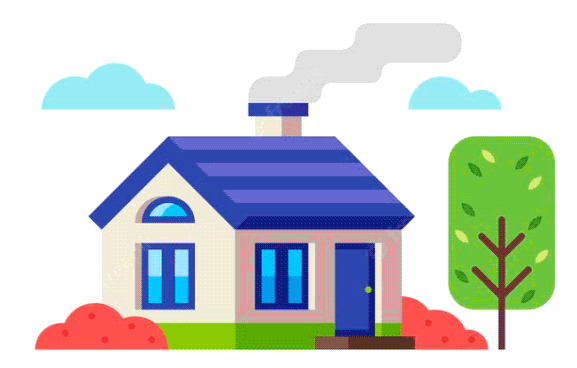
- House without chimney: You can indicate a slightly cold and distant personality, or that the person comes from a family environment with few affective connections. However, this must be confirmed by other data and the age of the person is also important.
- Smokeless chimney: It can be an indication of lack of communication within the family or in the person's environment, which could be due to emotional deficiencies or emotional problems such as jealousy or the loss of a loved one.
- House with more than one fireplace: In this case, there is a design of several chimneys in a house of good construction and design, which can indicate a subject with great affective deficiencies that seeks the love of those who make up their home. If it is a child, they will be looking for their parents' affection, while adults may be in need of their spouse's affection or those who represent their greatest affections, such as parents or partners. Multiple chimneys in young sexual criminal subjects can have an obvious sexual content in their design.
- Smoking fireplace: It can be an indicator of good family relationships and a cozy and quiet environment, although it is not common in very young people.
- Very dense or shaded smoke: It can be an indication of tension, problems in the family or personal sphere, and an unconscious desire to channel that negative energy outside.
- Light smoke: Talk about cozy, warm, pleasant atmosphere.
- Vertical smoke: idealistic and mystical personality, there are desires to flee from reality, it is not formed with what he has and is in constant search to live his dreams.
- Smoke to the right: It is a determined person, who constantly advances to the future, believing that there is much more to discover and achieve. He is an innovative person who does not conform to the customs of the past and easily adapts to new friends and social environments. He has an adventurous personality and lover of the new, highly outgoing and sociable, he does not cling to his family or hide in it. Instead, look for new experiences and opportunities to expand their horizons and reach their goals.
- Smoke to the left: It is associated with nostalgia, conservatism and tradition, they are people who are not easy to advance. They usually constantly recall the past feeling safer in those experiences and experiences. Very conservative and traditionalist, it is one of those who do not make many friends but maintains few but good.
Graphic test of the tree, what is and how it is interpreted
The walls
The walls are the fundamental support of a house from an architectural point of view, but they are also essential from a psychological perspective. If we observe the spatial location of the walls in the drawing, we can see that they are in the central area, which makes them a privileged area where The strength or weakness of the subject is represented.
The walls themselves are a representation of the strength and adaptability of the self of the individual who draws, which can offer valuable information about his emotional personality and state.
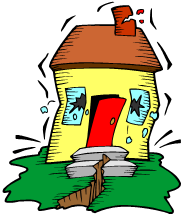
- Walls with firm stroke: If the subject draws the walls firmly, in a single continuous movement and with good pressure, this indicates a good adjustment to the surrounding environment. In addition, it suggests an adequate strength of the self and a good functioning of the reality criteria. In summary, it is a person with good mental and emotional health who is in tune with the world around him.
- Walls with weak lines or strokes: This indicates a deficiency in the ability to defend. However, this deficiency can be compensated by the presence of other defenses. These types of subjects tend to accept defeat easily and abandon the struggle, which leads them to be extremely tolerant of environmental situations that cannot be modified, passively.
- Walls with reinforced lines: These could also be more or less pronounced. This tells us about the presence of some more or less serious conflict as the strokes are reinforced. Presence of extreme defensive mechanisms (the greater the reinforcement will be the most likely of the seriousness of that situation).
- Walls made of transparent strokes: The strokes that make up the walls that are almost not perceived in the drawing are so weak. Generally when we observe a transparency we are facing an important level of deterioration, presence of failures. Remember that by nature the walls do not allow us to see what is behind them, here the subject designs walls that allow to visualize what is beyond. Psychopathologically this type of designs in psychotics and deep deficient has been observed. Generally this will be indicating that some psychopathological process can be happening since the subject distorts the vision of things. If this situation will occur in young children, then we will be in a position to say that it is immaturity in the conceptual capacity and in the modality of seeing reality, so it concurs to fantasy.
- High walls: The walls that rise up, can be a projection of the child in their need to expand and grow, as well as a manifestation of strength and aggressiveness. If these walls have no windows, they can also indicate selfishness and exclusion of others in their own growth, and an ambition that does not take into account the needs of others. If the high walls are accompanied by a narrow building, poorly defined or distorted contours, there could be uncertainty, fragility and affective deficiencies.
- Low walls: They can express introversion, oppression, impotence, overwhelming, discomfort and insecurity in the subject's near environment. If these walls also have no windows or are small and with bars, these features are even more enhanced.
- Broken walls: They are those with remitists or holes, they are usually indicators of chronic problems in the family that threaten to possible painful ruptures. These problems can affect the emotional stability of the subject and generate an unstable and insecure atmosphere in the home.
The door
The door is an essential element in communication between the subject and its environment, being the first means of contact and the entrance to the inner and outer world of the subject. It is a means of exchange and defense, since it allows the entry of positive and negative things of the outside environment. Therefore, in the house test it is important.
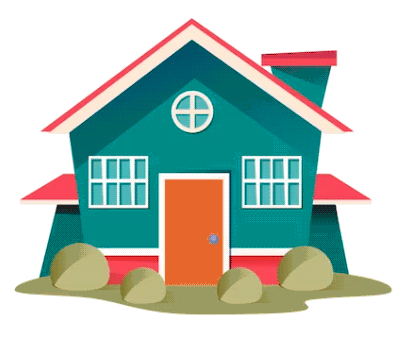
- Door absence: In this case, it may be that the subject has forgotten to draw the door or has not given it importance. If the house is drawn with rapidity features, you can indicate care and concentration difficulties. However, it can also be an indicator that there is some type of blockage, there is a need to isolate itself from the outside world, a lot of introversion, avoids external pressures that can be seen as aggressive or undesirable. It also shows shyness and the need for self -protection and having their own space without the interference of other people.
- Big door: The proportion of the door with respect to the rest of the house indicates the degree of dependence of the subject with the external environment. A large door can indicate a great need for affection and empathy towards others, which can lead to great hospitality and social openness.
- Exaggeratedly big door: When the door is too large and occupies the entire facade of the house, it can indicate an excessively open, generous and sometimes indiscreet personality. These types of people usually have difficulty providing and maintaining secrets, stunning.
- Very small door: A door too small in relation to the size of the house can indicate a shy and introverted subject, with difficulties in establishing interpersonal relationships and expressing himself fluidly in his social environment.
- Door to the side of the house: selective person in communication with others, introverted and with difficulties in contact with the medium. Choose your friends in detail. Suspicious, prudent, who has trouble giving confidence to strangers. It also tells us about critical sense and difficult to open towards people outside their closest entone.
- Door behind the house: suspicion, selectivity and difficulty in communication modalities with the environment, highly selective when accepting friends at home.
- Door above the baseline: personality excluded from the environment by own will, inaccessible and with strict conditions to make contact with the environment.
- Open door: Great emotional need of the subject who hopes to be satisfied from the outside or great feeling of vulnerability, lack of adaptation of the subject's self -defenses, attitude of a subject too confident and gullible.
- Door closed: self -sufficient subject, it does not open to new affections in your life and if you decide to open up to any of them, you will spend a lot of time meditating and studying the possible new relationship.
- Half-closed door: healthy balance between the exchange with the environment, prudent and balanced.
- Door made with pressure emphasis: fear of being visited by unwanted someone, paranoid suspicions.
- Door with staircases: Good reception, communication facilitator and possible pride signal.
- Doors with accentuated details: extremely sensitive, defensive and with great distrust to the point of the paranoid.
- Two doors: The location of doors on two different sides of the house when it comes to children, can be interpreted as a possible conflict between the parents or between two members of the nearby family that the child perceives as a threat to the family unit. You may feel the tension and discomfort that arises from that situation and reflects it in the drawing. It can also represent a sensation of division or separation, the subject feels trapped between two opposite forces in his close environment.
HTP test, what is, what is your purpose and keys to interpret it
The Windows
In the house test, another element to consider are the windows, which act as a secondary medium of interaction between the subject and the environment. While the door is the primary means of contact and communication, the windows allow us to see outside and from the outside can be seen inside the house.
The facade of the drawn house can reflect an external image that the subject wants to project himself, either of wealth, power, success, among others. In this sense, the windows located on the facade are like the eyes of the house, allowing to see out and indiscreetly.
It is interesting to ask what part of the house each window corresponds and listen to the subject's responses, since this can reveal important information about your personality and way of relating to the environment.
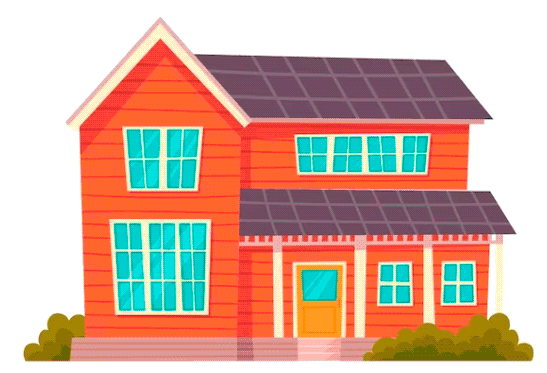
- House without windows: This subject prefers to remain isolated from the outside world, with a total lack of communication with its environment, a feeling that it cannot face the external reality. It can be an indication of paranoia and distrust of people and society in general.
- 4 crystal windows: Introverted subject, who lives in his own world and has difficulty expressing and receiving affection. As for the economic, it can have greedy trends.
- Simple windows: In the case of children, it is normal for them to draw simple windows, however, if an adult does, it could be an indication of a lack of attention to detail and a tendency towards feelings above reason.
- Windows with bars: The subject distrusts others and seeks to protect his intimacy. Living between bars in your own home could indicate a high degree of fear.
- Windows with handles or faults: Detailed and observer subject, with an excellent capacity for perception and analysis. His analytical thinking tends to prevail over feelings.
- Windows with curtains or blinds: Curtains can be a detail of good taste and pleasure at home, but they can also indicate a need to protect the subject's privacy. If they are completely closed, it can be an indication of isolation and reluctance towards contact with others.
- Windows adorned with vases and flowers: The subject seeks well -being and aesthetics at home and for his.
- Windows with postcons: Indicates a need for isolation and protection of the subject's intimacy.
- Completely naked windows: The subject can be impolite and rude, showing little tact towards his surroundings and causing conflicts.
- Open or large windows: If they are open or partially open we can have an opening with respect to the outside environment. There is a need to learn and observation capacity. These subjects are not afraid of being evaluated by others.
- Closed or very small windows: They can indicate protection towards others, introversion, need for privacy and caution in interpersonal relationships. These windows are common in the drawings of young children, but their meaning deepens adolescence and adulthood.
- Baded windows: It can be a sign that the individual has problems in the viso-motor area and lack of attention, especially if he is a child. It can also be indicative of insecurity, lack of motivation, learning difficulties and organization, and little interest in social relationships, or that these occur in an inadequate way, such as showing aggressiveness or lack of empathy.
Soil
In the design of the houses, The soil represents the connection of the subject with reality and constitutes the baseline that separates the unconscious of the conscious. The appearance of the soil in the drawing is important and the more reinforced the stroke, the more desire to hold on to experience the subject.
The direction of the soil line is also an important aspect that is studied in graphology and a well -set trace and with good pressure is a sign of health. On the other hand, a weak or cleft stroke can be indicative of latent schizophrenia and draw bodies suspended in the air without contact with the soil can be a pathological signal.
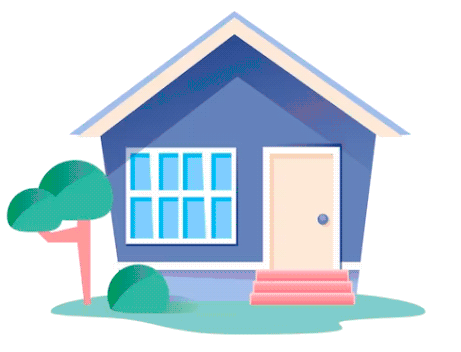
- Lack of soil: You can indicate insecurity and lack of roots, a person who feels changing or in transition. It can also be indicative of a recent loss of the affective support of their loved ones.
- Single -stroke: The subject has a great accession to the norms and expectations of society. It is important for him to have clear foundations and concepts.
- Ascending soil: It tells us that the subject is full of enthusiasm and optimism, with high ambitions and desires for overcoming.
- Descending soil: There is discouragement, sadness, depression and dejection, with a feeling of collapse and lack of support.
- Soler: The subject is spontaneous and free in his actions, although if the ground reaches the edges of the leaf, it can indicate impulsivity.
- Sinuous soil: Indicates that there is an internal struggle between the defense of family life and the openness towards society.
- Monte type soil: The elevation of the house in a mount.
- Accentuated soil: The person gives great importance to the material, money and security, which is reflected in a strong and remarked line of the soil in drawing.
The fence
Every detail that is drawn in the house test can be used to detect the subject's insecurity. In particular, The fence is an important indicator of the defensive strategies used by the author of the drawing.
In all parts of the world we will find houses with fences built by their owners. These fences can have simple or sophisticated designs, even becoming true walls that separate the property from the outside world. There are several types of fences that can help us better understand the subject, from those that are simple and decorative to which they are stronger and more restrictive.
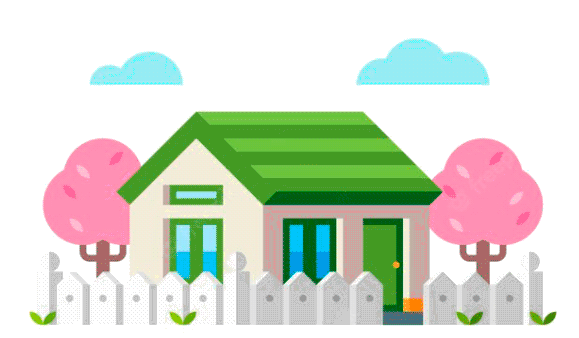
- Completely fenced house: The more obvious the enclosure of the house, the greater the level of introversion and distrust abroad. Indicates introversion, egocentrism, desires for loneliness and difficult access to the intimacy of the subject. It is important to observe all the strokes and details of the drawing to determine if the subject is enclosed by their own will or is a defensive attitude.
- House with low: hinders contact with others and is a sign of introversion and isolation. The lower the fence, the less the degree of distrust of the subject will be, but the intention of putting limits to its property will increase.
- HIGH HOUSE: Indicates introversion to its maximum degree and disinterest in contact with the outer environment.
- House with high near and pointed shapes: The subject wishes to scare anyone who tries to approach his privacy. It is an aggressive type of defense, that is, the willingness to protect the territory of the invasion of strangers at all costs.
- House with low and romas tips: defends your property but is more open to interpersonal relationships and knows that these can enrich it. The subject knows how to receive visits but also puts necessary limits to protect his intimacy.
The way
The path that leads to the house is a symbolic element that shows us the subject's tendency to establish contact with others and with the environment. Can observe your level of sociability, your ability to relate and the ease or difficulty you have to interact with others.
It is important to note that the road is the first access to the house, to the housing and the intimacy of the subject. Therefore, it is where visitors and friends enter, where the external arrives.
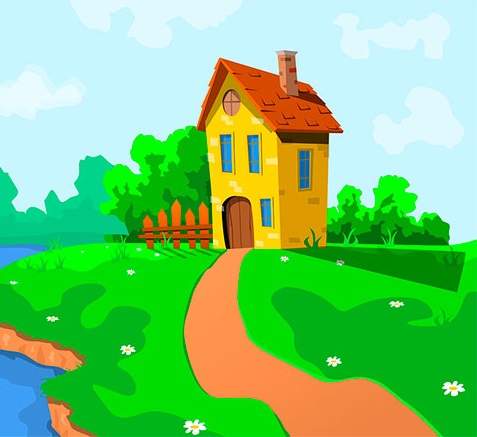
- House without a way: If we consider that the path is a symbolic access, the absence of one implies that the individual does not allow admission to his private life. This subject prefers not to be disturbed and values privacy in your home. It could be introverted, not interested in interpersonal relationships and prefer to work alone. Nor do you enjoy visits and tend to loneliness.
- The road has stones: Piedras symbolize another obstacle to accessing the house, indicating that the individual makes it difficult to approach his personal life. You can use various strategies to discourage visitors, such as arguments, bad gestures or lack of communication, all to protect your privacy.
- The road is winding: This is another example of hindering access to home, but in a softer way. The person will seek less aggressive excuses or negatives to avoid visits, although he pursues the same objective of protecting their intimacy.
- The road goes to the right: A path that extends from the right side of the page suggests desires for innovation and progress towards the unknown. This individual seeks to project to the future, breaking with the past and the family. He is outgoing, sociable and enjoys interpersonal relationships.
- The road goes to the left: In this case, the subject is traditionalist, attached to his friends and customs, and values home life. It tends to be nostalgic and introverted.
- The road is ascending: A straight and ascending path to the house indicates a sociable person, extroverted, cheerful and enjoying life. The wider the way, the greater the sociability and communication will be.
- The road surrounds the house: This suggests isolation and introversion. The individual avoids contact, possibly due to previous painful experiences. It can show narcissistic and egocentric trends.
- The road is divided into two: There are two possibilities: If the fork the way leads to a single door, the individual has ambivalent behaviors and fights internally between being extroverted and introverted. If the road leads to two different doors, the subject carefully selects which external influences allow in his life.
- There are several houses with many roads: Corresponds to extremely outgoing individuals, adaptable to situations and people. Often have many friends, although these could be superficial. These people are always willing to receive others in their home, opening their private life regardless of who arrives.
Accessories
The accessories in the house test will be a means to Identify the lack of security that the person has. Also see what your desires or desires are. Add elements when drawing a house will tell us how you perceive your environment, looking with those accessories to make your life more pleasant and pleasant, then turning your ideals, your wishes.
Recall that nothing that the subject adds to his drawing will be casual, every detail has an important significance that part of his intimate life.
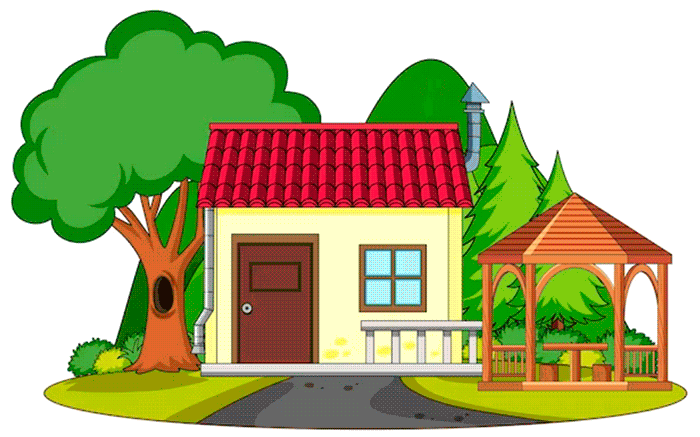
- Trees and plants: They are common complements in house drawings and usually represent the desire to adapt to the environment, especially to the family environment.
- Flowers: They symbolize youth, joy and aesthetics. They usually indicate the intention of showing a happy and harmonious home.
- Garden grass: If drawing with sharp strokes, you can suggest discomfort or discontent in the family environment.
- Animals: They can be an indicative of loneliness and desire to have human activity around, which indicates dissatisfaction or affective deficiencies.
- Human figures: The size of the drawn people may indicate their importance in the author's life. They can also represent a self -portrait and, in that case, they could reveal feelings of loneliness or desire to isolate themselves from the family environment.
- Garden furniture: They suggest that the subject tries to hide his intimacy and faces difficulties in interpersonal relationships.
- Ponds and water: The presence of water indicates activity and projects. If there are fish in a pond, it can be a sign of infantilism.
- Clouds: They could represent complications or inconveniences, but they can also have an artistic meaning.
- Mountains: If they appear in the drawing, the subject could be ambitious and aspire to reach high social or professional positions.
- River or Riachuelo: Suggests a tendency to isolation and difficulty allowing access to privacy. If there is a bridge in the drawing, this interpretation can be ruled out.
Projective tests: Graphical Productions Interpretation Guide
Bibliographic references
- Hammer, e. F. (1973). Clinical applications of projective drawings. Buenos Aires: Paidós.
- Machover, k. (1951). THE HUMAN FIGURE: PROJECTIVE PERSONALITY TEST. Buenos Aires: Paidós.
- Sánchez, n. (2003). THE DRAWING OF THE HOUSE: CHILD PROJECTIVE TEST. Madrid: Pyramid Editions.
- Adriana s. Masuello. GRAFOANZING. www.GRAFOANZING.com
- « Computerized tomography (CT) what is it, what is used and how it is done
- Structuralism Fundamentals and main authors »

